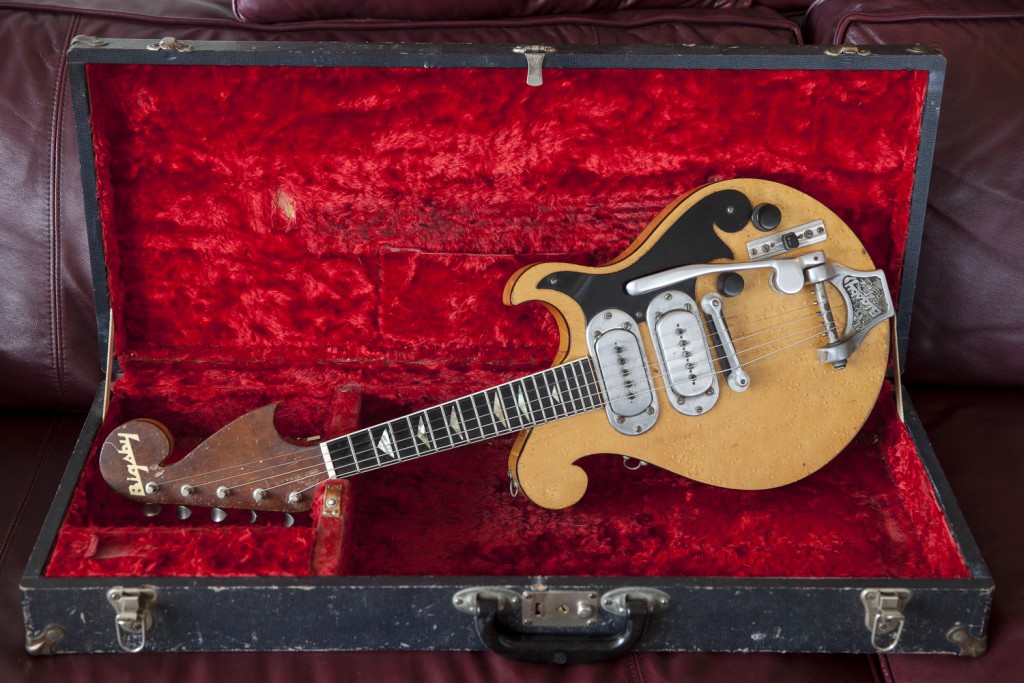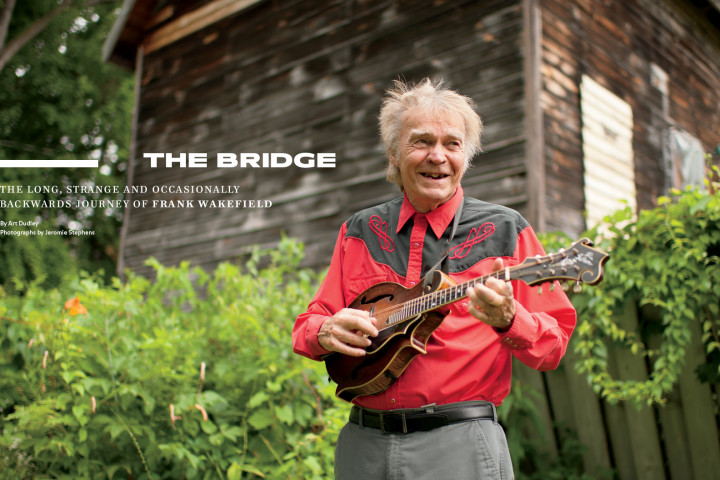To many, the ultra-rare guitars, mandolins and steels built by Paul A. Bigsby in the late ‘40s and ‘50s are some of the most important electric instruments ever made. Though most guitarists know Bigsby for his famed vibrato, the man himself was a true musical instrument innovator and inventor (and just a fascinating character). Before he started tinkering with instruments and shaping the sounds of Western Swing and country music, he was a motorcycle racer, race promoter, machinist and music fan.
From the beginning, Bigsby was rubbing shoulders with his music heroes. In the mid ‘40s, he approached steel guitarist Joaquin Murphy of Spade Cooley’s band with a prototype lap steel. Murphy liked what he saw and ordered an instrument for himself. Bigsby built him a D-8 (double neck, eight strings per neck) guitar. An instrument maker was born and the rest, as they say, is history. Electric solidbody guitars (and headstock shapes) would never be the same. (If you want to delve into the Bigsby story, we can’t recommend Andy Babiuk’s coffee table book on the instruments enough.)

The story behind mandolin #91653 (Bigsby serial numbers are the month, day and year the instrument was completed), currently for sale with Larry Wexer, is a fascinating one. Beginning in 1946, Bob Wills moved to Sacramento. He opened a venue called Wills Point where he and his Texas Playboys were the house band (read the fascinating story of this venue here.)
In 1952, Texas Playboy Tiny Moore moved away from playing a Gibson EM-150 and obtained a Bigsby mandolin that was electric, a solidbody and sported five strings (all pretty unique elements). That instrument became the genesis for this ’53 Bigsby. “The original owner of this instrument was Glen Tarver,” Wexer says of the mandolin he has for sale. “He was a fiddle player and he also played with Bob Wills and Tiny Moore, and he went to Paul Bigsby and ordered one like Tiny.” Unlike Moore’s mandolin, Tarver’s sports a vibrato (with rubber, not a spring) that was custom made for the mandolin. The volume control is also relocated from where it is on Moore’s instrument.
“At one point,” Wexer continues, “Tiny’s was in the shop and he actually borrowed [this mandolin] and used it as well, and then bought it from Glen when Glen wanted to go back home to Texas. He didn’t keep it that long and sold it to an Alvin Willmett, who was one of his students. I understand it’s been in that family ever since.”
Considering how most Bigsby instruments haven’t been heard publically for decades, Wexer says this mandolin’s tone has stood the test of time. “It’s really great and unique,” he says. “It’s amazingly quiet. It uses single coil pickups and you don’t hear any noise. They’re very clear and smooth but with not being harsh at all. It’s just super easy and effortless to play it.”


